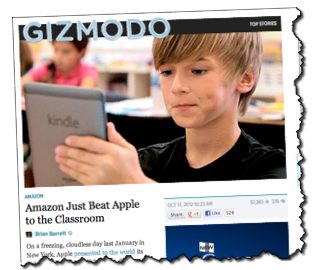The Oregon Supreme Court just reaffirmed the legal protection of nasty  reviews as free speech.
reviews as free speech.
Which reminds me of the ongoing opportunity and problem of reviews. Amazon.com reviews, Yelp reviews, Google, TripAdvisor, and all of them are a combination of powerful, important, and yet also full of problems. Users care and we generally love the idea of picking and choosing based on what all those nice other people decided to share with us. And business owners care too, we live and die with reviews. But there is that temptation to write your own reviews, game the system, get your business five starts by hook or by crook. And there’s that related temptation to use reviews to hurt competition.
In the Oregon case from just last week, the Eugene Register Guard reported the court sides with online review writer in dispute with wedding venue owner. The issue was between wedding venue owner Carol Neumann and customer/reviewer Christopher Liles.
Two days after attending a wedding on Neumann’s property in June 2010, Liles posted to Google Reviews a highly unfavorable rundown of his experience at Dancing Deer Mountain. Titled “Disaster!!!! Find a different wedding venue,” the review called Neumann “two-faced,” “crooked” and “rude.”
Oops. Neumann sued for $7,500 in damages for defamation, and that suit was thrown out. Neumann appealed and won. The state supreme court just reversed the appeal. The Register Guard reported:
The state Supreme Court ruled Thursday that an online reviewer’s highly critical remarks about the wedding venue owner are protected free speech.
So reviews are protected by the first amendment. Liles’ Lawyer summarized:
Strongly stated opinions about goods and services — no matter how derogatory — are protected speech so long as such expression does not include or imply provably false statements of fact.
Interesting. And it makes sense. But I have some questions for you:
- How to you react to the blistering reviews that seem full of venom? I tend to discount them. I take the excess emotion as a sign that there is more there than just the words. I’m very wary of what seems like revenge reviews. I’m reminded of a seething-with-rage review of a restaurant in which the reviewer wrote “they refused to seat us because they said we were drunk.” So I don’t take that as such a negative.
- What do you do to deal with reviews that are written by the business owners, friends, families, and employees? Can you tell? I look for real detail and granularity to validate a review. And I also prefer places that have hundreds of reviews, rather than just a few, because it’s harder to game reviews in high volume.
- What do you do with reviews written in bad faith by competitors. For example, I’m pretty sure some restaurant owners write bad reviews for the restaurant across the street. How can we tell?








 This makes me feel like I really own the book. If I have a spare 10 minutes, just about wherever I am, I can read the book. It’s great usability. Great convenience.
This makes me feel like I really own the book. If I have a spare 10 minutes, just about wherever I am, I can read the book. It’s great usability. Great convenience.
You must be logged in to post a comment.